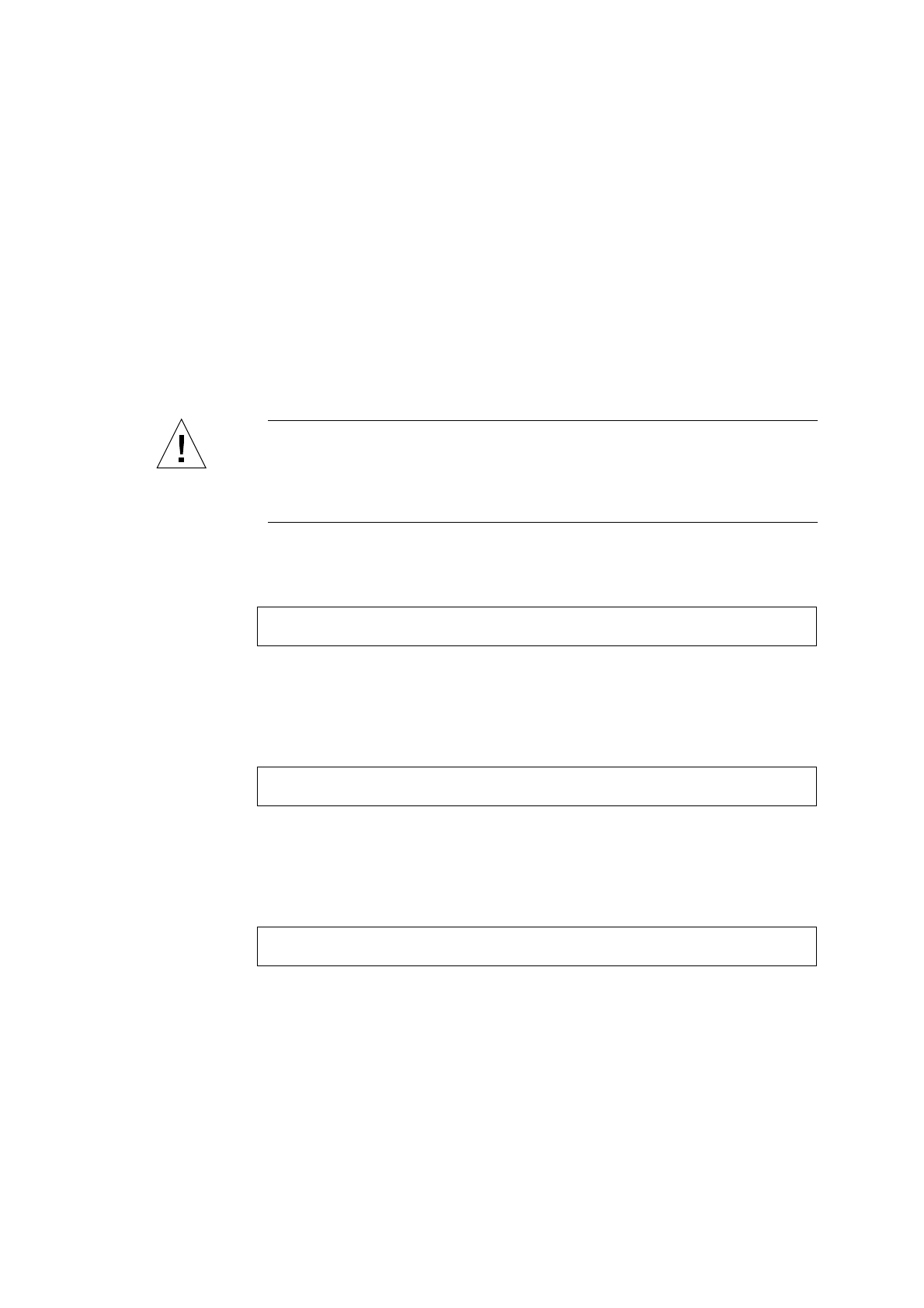
Chapter 8 Administering MFS Disks 8-11
In the output above, make note of the SCSI disk address (similar to the number
c1t4d0s2). Chapter 3 of the Sun MediaCenter UltraSPARC Hardware Manual has
instructions for mapping SCSI disk addresses to physical disks.
2. Open the appropriate Multipack enclosure, locate the failed disk, and remove and
replace it.
Documentation for your disk subsystem tells you how to replace a disk. There is no
need to halt the server or reduce its load while replacing the failed disk.
3. Following disk replacement, enter the following mfs repair command to restore
data from the parity disk to the new disk:
The address c1t4d0s2 is an example, consistent with the preceding example
commands.
4. When the preceding command completes, enter the following command to return
the server to normal playback mode, phasing out parity mode.
Upon successful return of the preceding command, the server is in normal playback
mode and you can, once again, withstand a single disk failure.
You can combine the -r and -p options, shown in the previous two example
commands. For example:
With a command such as the preceding, you can combine repair and return-to-
normal-playback in a single command.
server# mfs repair -r -d /dev/rdsk/c1t4d0s2 -v
server# mfs repair -p -d /dev/rdsk/c1t4d0s2 -v
server# mfs repair -rp -d /dev/rdsk/c1t4d0s2 -v
Caution – It is only at a point after you have received the “disk failed” message
described above that you can safely remove and replace a failed disk. Do not
confuse this definitive message with, for example, “soft errors,” such as SCSI read
errors. If you remove a disk that is not failed while the server is in operation, you
can cause extreme disruption to the server, possibly including a hang or a panic.


















